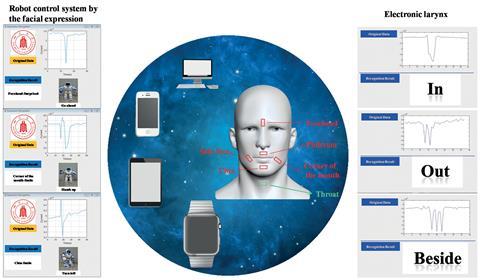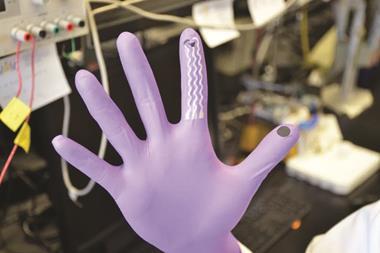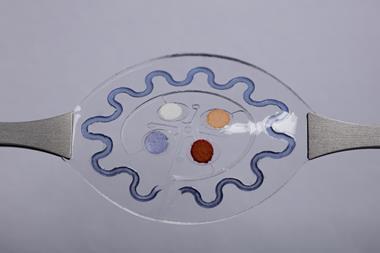Self-healing sensor uses hydrogen bonding network to interpret facial expressions and even speech for computers
Flexible skin sensors that allow humans to interact with machines have long been a goal of communications researchers, but issues such as poor reliability and stability have presented a thorny problem. Researchers in China have surmounted this, and have successfully constructed a highly sensitive, self-healing sensor able to convey human facial expressions to a computer. This technology could have wide-ranging implications for those with impaired speech, putting intuitive real-time speech processing within reach.
‘Although flexible sensors have been widely reported, most of these stopped at signal collection without complete signal processing and command output process,’ says Xinxing Zhang, a researcher at Sichuan University. ‘Due to its nanostructured conductive network design, our sensor can precisely detect tiny human motions, like facial expressions or vocal-cord vibrations.’

In order to achieve the dynamic structure of the sensors, Zhang and his team found inspiration in the robust hydrogen bond connections in DNA. A nanostructured conductive network was then constructed using bio-derived carboxyl cellulose nanocrystals and chitosan-decorated epoxy latex. The nanocrystals provided a rich source of carboxylic and hydroxyl groups, while the chitosan provided abundant amino, acetamide and hydroxyl groups. This combination allowed multiple hydrogen bonds to form between the two materials.
When attached to the face, the sensors interpret strain exerted by the movements of facial muscles. This causes a current change within the sensor, which then sends the information to an accompanying software package to interpret. This has significant implications for future communications technology – Zhang and his team believe that it has promise in facial expression recognition and potentially for the development of an electronic larynx. Current applications could include enabling real-time speech for pronunciation-impaired people.
What sets these sensors apart from others is their ability to self-heal, a property enabled by their unique structure. ‘Due to the multiple hydrogen bonding interactions, our sensor exhibits real time self-healing ability with an ultra-high efficiency,’ explains Zhang. At the moment, the sensors are capable of self-healing within 15 seconds at ambient temperature without any external stimuli. ‘As far as we know, this is the fastest self-healing speed in sensor systems,’ Zhang adds.
‘Sensing human facial expressions is among the most important technological issues,’ says Wolfgang Binder, an expert in nanostructured materials at the Martin Luther University of Halle-Wittenberg. ‘The present work is the first to truly address a healing response similar to natural systems with a sensing tool able to transform small mechanical signals into electrical signals. Damage induced by the muscular movements can be self-healed within the material autonomously – an important requirement for this application.’
References
J Cao et al, Angew. Chem., Int. Ed., 2017, DOI: 10.1002/anie.201704217












No comments yet